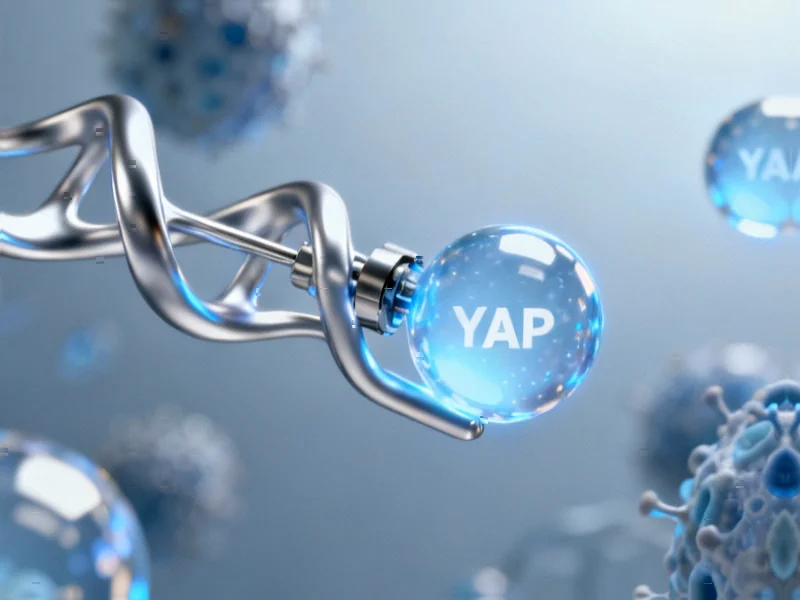Widespread Presence of RNA Structural Elements Documented
Scientific reports indicate that GNRA tetraloop motifs, fundamental structural elements in RNA, exhibit far greater diversity than previously recognized. According to a comprehensive study published in Scientific Reports, researchers have identified 23,283 non-redundant instances of these motifs across 3,122 protein data bank entries, representing 13,729 structurally unique configurations.
Table of Contents
- Widespread Presence of RNA Structural Elements Documented
- Methodology and Scope of Analysis
- Distribution Across RNA Families
- Conservation Patterns and Structural Variations
- Backbone Topology Diversity
- Protein Interactions and Functional Implications
- Cross-Chain and Long-Range Structural Features
- Biological Significance and Evolutionary Implications
Methodology and Scope of Analysis
Sources familiar with the research methodology explain that investigators used the ARTEM tool to scan nucleic acid-containing structures without imposing sequence or structural restraints. The analysis defined the GNRA tetraloop motif as consisting of six residues, including the core tetraloop and one flanking canonical base pair. The report states that this approach allowed for unprecedented discovery of variant forms across diverse RNA families.
Distribution Across RNA Families
Analysts suggest the findings demonstrate the ubiquitous nature of these structural motifs. The matches were reportedly found in 86 non-coding RNA families from Rfam, representing 53% of all families with available 3D structures. According to the data, the list included 21 riboswitch aptamers, 19 ribozymes, 19 viral RNAs, 9 spliceosomal RNAs, and 8 ribosomal RNAs. Only 22 matches involved DNA residues, highlighting the RNA-specific nature of these structural arrangements.
Conservation Patterns and Structural Variations
The research reveals specific conservation patterns within these motifs. Sources indicate that n2 and n5 residues emerged as the most conserved positions, with 72% and 78% of matched bases being G and A respectively. Meanwhile, the n4 position matched a purine in 80% of cases. The report notes that among 23,283 matches, 4,881 were formed by tetraloops, 1,409 by pentaloops, 809 by hexaloops, and 2,303 by longer hairpin loops.
Backbone Topology Diversity
Perhaps the most significant finding, according to analysts, is the identification of twelve recurrent backbone topology variants. The study classified all 13,729 motifs into 59 distinct backbone topologies based on binary relationships between neighboring positions. Researchers reportedly identified all five possible two-strand variants and six out of ten theoretically possible three-strand variants. The canonical one-strand variant was found to be the most frequent, appearing in 49 different Rfam families.
Protein Interactions and Functional Implications
The report states that 768 matches (3.3%) were involved in forming crystal contacts, with n3, n4, and n5 positions being the most frequently interacting. This aligns with the known propensity of GNRA tetraloops to form long-range interactions. Additionally, researchers observed that three of the four identified pentaloop insertion variants formed interactions with proteins, suggesting functional significance beyond structural roles.
Cross-Chain and Long-Range Structural Features
Analysis of multi-chain variants revealed only 170 instances (0.7%) spanning multiple RNA chains within single units. Sources indicate these included two three-chain variants from a synthetic DNA nanostructure and multiple RNA variants with residues distributed across different chains. The vast majority of GNRA-like matches reportedly involved locally arranged residues in terms of both RNA sequence and secondary structure.
Biological Significance and Evolutionary Implications
According to researchers, these findings illustrate the remarkable capacity of favorable RNA 3D motifs to adapt to diverse backbone contexts, adding another dimension to understanding RNA folding complexity. The identification of recurrent motifs across multiple RNA families suggests evolutionary conservation of these structural solutions. The report emphasizes that this structural versatility may underlie RNA’s ability to perform diverse biological functions, from catalytic activity to genetic regulation.
Related Articles You May Find Interesting
- Amazon’s Robotics Initiative Could Displace Over 600,000 Warehouse Positions, Do
- mRNA COVID Vaccines Linked to Improved Survival in Cancer Patients, Study Reveal
- Microsoft Revives Clippy Spirit with New AI Assistant Mico in Copilot Fall Updat
- AI Workforce Anxiety Grows as Companies Struggle With Governance and Implementat
- AI-Powered Browsers Promise Autonomous Web Agents, But Hurdles Remain
References
- http://en.wikipedia.org/wiki/Rfam
- http://en.wikipedia.org/wiki/Tetraloop
- http://en.wikipedia.org/wiki/Riboswitch
- http://en.wikipedia.org/wiki/Sequence_motif
- http://en.wikipedia.org/wiki/Structural_motif
This article aggregates information from publicly available sources. All trademarks and copyrights belong to their respective owners.
Note: Featured image is for illustrative purposes only and does not represent any specific product, service, or entity mentioned in this article.



